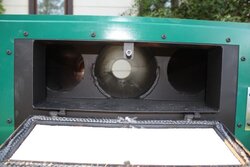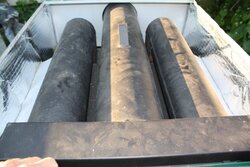I don't have a boiler, but do have a wood furnace with a secondary heat exchanger that has 3 large tubes to collect heat from. I recently was reading on here and discovered that turbulators help to break up the "core" of the heat in the exchanger tubes. We have 2 tubes that are roughly 3.5" in diameter and a large 6" tube that runs down the center of the top of the furnace. We see very little buildup and I could place them and remove them in seconds. Can they be used to increase heat transfer on a forced air furnace? I see they are used on boilers, but I wasn't sure about any other installation. This is something that interests me. We have excellent draft so slowing down some won't be an issue. Thoughts?
Those with turbulators
- Thread starter laynes69
- Start date
-
Active since 1995, Hearth.com is THE place on the internet for free information and advice about wood stoves, pellet stoves and other energy saving equipment.
We strive to provide opinions, articles, discussions and history related to Hearth Products and in a more general sense, energy issues.
We promote the EFFICIENT, RESPONSIBLE, CLEAN and SAFE use of all fuels, whether renewable or fossil.



